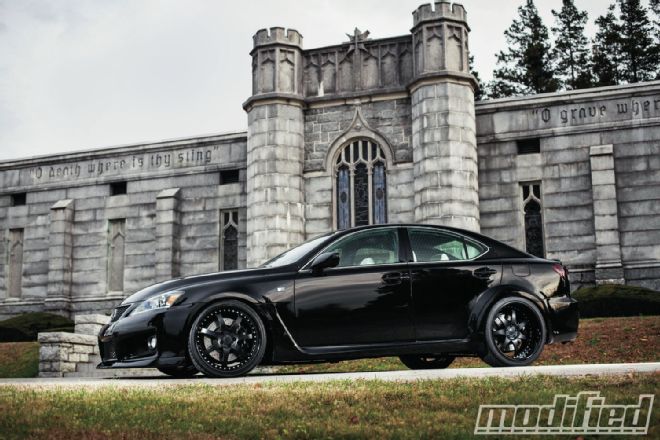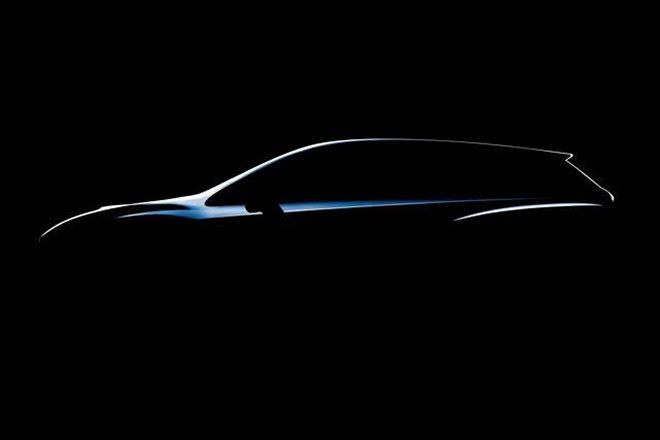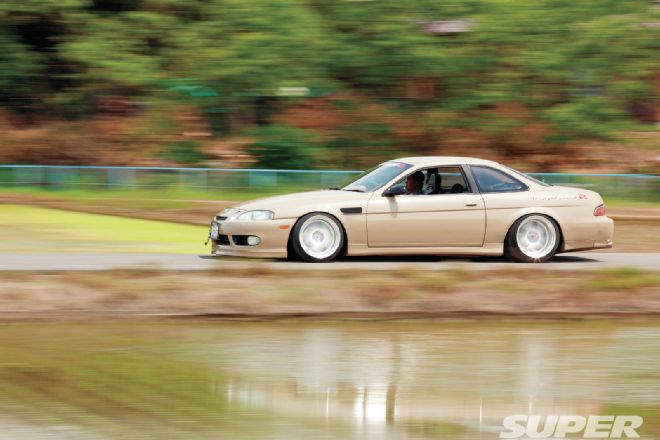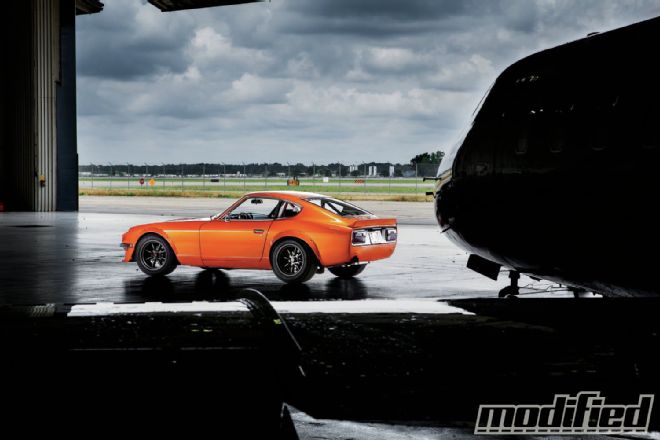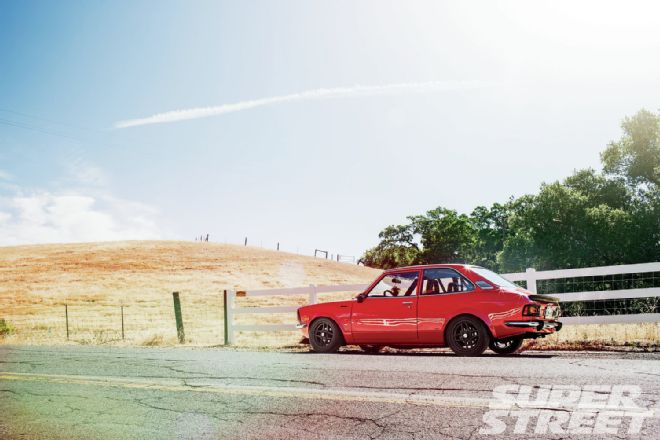A venomous snake whose bite is nearly always fatal, the black mamba isn’t a creature you want to cross paths with. Known for its tenacity and extremely aggressive demeanor, it is one of the most feared snakes in Africa. It’s also the fastest moving snake on the planet, capable of slithering along at extremely fast speeds. What does a dangerous reptile from Africa have to do with a luxury sedan from Pennsylvania? Surprisingly, there are more similarities than you might expect.
Our story begins with Brian Fox, owner of Fox Marketing in York, Pennsylvania. Not only does Brian own and operate a successful graphic design and marketing business, but his company is also responsible for designing and building custom cars. Back in 2008, Brian and his team were tasked with creating a custom Lexus IS-F to use at the almighty SEMA Show in Las Vegas.
Fast-forward to last year, and Brian and his team wanted to take another crack at building an IS-F: the then newly refreshed 2012 model. After a long and comprehensive search to find a black model, a local dealership was able to source one for Fox, and without even going for a joyride, the car went straight from the dealership to the shop to be immediately stripped down.
2012 lexus IS F stainless steel piping Photo 2/8 | 2012 Lexus IS-F – Wicked Serpent
The first item to tackle was the engine’s performance capabilities. Though the factory 5.0L 416hp V8 engine Lexus included in the IS-F is far from slow in factory spec, the team set out to implement a similar rear-mounted twin-turbo setup to the one used in its previous SEMA build. A pair of Turbonetics GTK-350 turbochargers was installed in a custom rear-mounted configuration at the back of the car, along with a pair of 38mm wastegates. If you’re familiar with the sound of a tuned Lexus V8 rumbling down the road, just imagine how gnarly it sounds with a pair of snails acting as the exhaust. Despite what some naysayers report, this system works very well, and response is crisp and immediate, especially with the 8-speed automatic transmission. The major advantage to a setup like this is that there are no heat issues or space constraints to deal with under the hood. Instead, it’s all contained in the back.
A Yonaka Motorsports dual-core intercooler cools the charge, while more than 100 inches of Yonaka T-304 stainless piping are used throughout the turbo and intercooler setup. The car’s automatic transmission is left unmodified, aside from the addition of some Amsoil automatic transmission fluid. Despite having to alter a few aspects of its previous turbo kit design to fit the updated ’12 model IS-F, Fox Marketing was able to complete the turbo kit fabrication and installation in about two weeks. When this Lexus is filled up with its venom of choice—VP100 street legal racing fuel—the results are lethal. At a safe and conservative 6 psi (it is a stock block, after all), the car put down an impressive 550 whp. With power like that on tap, we’re guessing this mamba moves at speeds that rival its snake counterpart.
For this Lexus to live up to its nickname, the exterior had to be equally lethal and aggressive. Brian’s go-to body shop, R Miller Autobody in Palmyra, Pennsylvania, was tasked with the exterior overhaul that would include a completely custom exterior package consisting of a modified front bumper, side skirts, and rear bumper. The width and stance of the vehicle were also altered with custom sheetmetal fender flares on all four corners, widening the fenderwells by 2 inches. The bumpers and side skirts were plastic welded to match the bulging new fender flares. “Whenever possible I like the idea of using the same materials as the manufacturer. We built the car to look as it should have from the factory,” Brian explained. After all the custom bodywork was complete, the IS-F was sprayed in a gorgeous hue of BASF R-M Onyx Black Pearl.
2012 lexus IS F iforged FS flux wheels Photo 3/8 | 2012 Lexus IS-F – Wicked Serpent
With the exterior and go-fast goodies checked off the list, the right set of wheels would be critical to complete the entire package. A beautiful set of custom, 20-inch FS Flux wheels from iForged features flat-black faces, gloss-black lips, and Alpine White hardware that match the car’s interior for a true one-off look. The setup is staggered with a 9.5-inch-wide pair up front and beefy 11.5-inch-wide wheels that fill the custom arches just right. The new rollers are wrapped in a set of sticky Toyo T1R tires to ensure that all 550 whp make it to the pavement effectively. Finally, a set of Road Magnet Performance lowering springs gives the car an aggressive look that’s free of fender gap while maintaining the OE Lexus ride quality.
At this point in the build, Brian posted a few photos of the car on the company’s Facebook page. Almost immediately after the photos went live, he received an email from an enthusiast in Miami who wanted to purchase the car, despite the fact that it wasn’t quite completed or even listed for sale. Though he was hesitant, Brian was offered a number he couldn’t refuse and agreed to sell the car upon completion. The buyer’s only requirement was that the interior of the Lexus be Alpine White. So with deposit in hand, Brian stripped the interior and took it over to Lee at New Image Upholstery, where the seats and door panels were wrapped in Alpine White leather, complete with black stitching and IS-F logos throughout.
With the IS-F completed, it was hard to say goodbye, but Brian knew it was going to a good home in Miami. So if you’re ever in the area and you see a sinister black IS-F that screams out the tailpipes unlike any other IS-F, stay away, because this snake packs quite the venomous bite.
2012 lexus IS F fender flares
2012 lexus IS F fox marketing front bumper
2012 lexus IS F real valence
Specs & Details
2012 Lexus IS-F
Engine Toyota 2UR-GSE 5.0L V8
Engine Modifications Custom rear-mounted twin-turbo kit; Turbonetics GTK-350 turbines with dual 38mm wastegates; Yonaka Motorsports dual intercooler; T-304 stainless steel piping; VP Racing Fuels VP100 street-legal fuel
Drivetrain Amsoil automatic transmission fluid
2012 lexus IS F carbon fiber engine cover Photo 7/8 | 2012 Lexus IS-F – Wicked Serpent
Suspension Road Magnet performance springs
Interior Custom Alpine White leather with black stitching; IS-F logos
Exterior BASF R-M Onyx Black Pearl paint; Fox marketing front bumper, side skirts, rear valance, and custom sheetmetal 2-inch fender flares; Meguiar’s car care products; paint and bodywork by R Miller Auto Body
Wheels, Tires & Brakes 20×9.5” (f) 20×11.5” (r) iForged FS Flux wheels with flat-black faces, gloss-black lips, Alpine White hardware; Toyo T1R tires 255/35/20 (f) 305/30/20 (r); OEM Brembo 6-piston calipers (f), 2-piston rear calipers, two-piece brake rotors; ’09 IS-F air cooler
Numbers 550 hp at 6 psi
For GREAT deals on a new or used Nissan check out Mossy Nissan Poway TODAY!